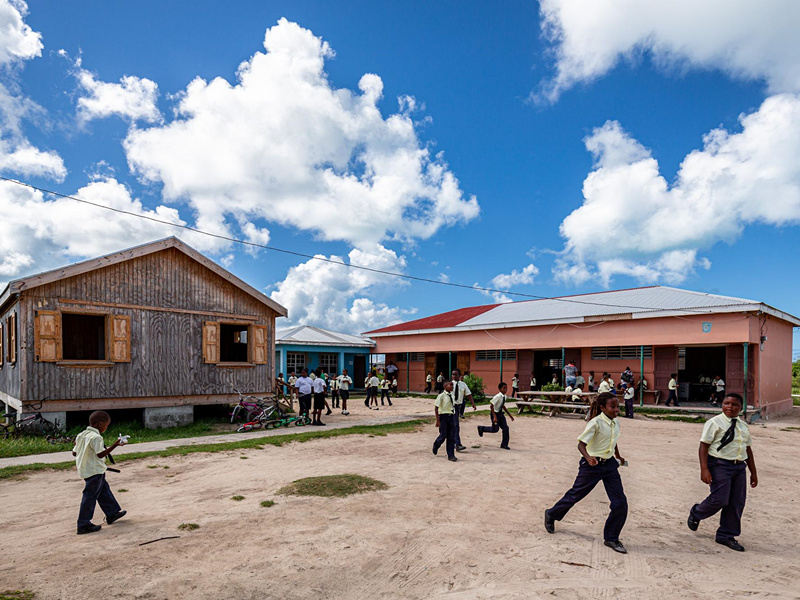
Children run in the courtyard outside Barbuda Primary School(UNDRR/Antoine Tardy)
By Patrick Fuller
On March 11, 2011 a 9.1 Magnitude undersea earthquake triggered a tsunami that engulfed more than 200 square miles of coastal land in northeast Japan. The world watched as TV news broadcast footage of 30-foot tsunami waves laying waste to entire towns. Over 20,000 people were killed by the tsunami and it was the elderly who suffered most. Fifty-seven per cent of the casualties were over 60 - more than twice their proportion of the population. When the order to evacuate came, many simply couldn’t escape to higher ground in time because of physically infirmity and the fact that many lived alone.
Disasters strike with impunity but it is the old and young, people with disabilities, women and girls and other marginalised groups who are disproportionally affected. They face greater levels of vulnerability and may be less able to cope because of their individual circumstances or their status in society. A person’s gender, age, physical abilities, ethnicity and sexuality, can put them at a higher risk of death or physical harm.
But despite their vulnerabilities, marginalised groups have plenty to offer when it comes to making their communities safer. Older people are often ignored when it comes to disaster planning despite the fact that they have valuable knowledge and learning from past disasters. Indigenous communities too may have insights into disaster risks based on traditional knowledge passed down through generations.
Just before the Indian Ocean tsunami made landfall on the Indonesian island of Simeulue in 2004, islanders were alerted by the violent earthquake that preceded the tidal waves. The warning cry of ‘Smong, Smong’, (the local word for a tidal wave) spread rapidly and people headed for safety in the hills. They were familiar with the warning signs of a ‘Smong’ thanks to a childrens song passed down by parents and grandparents, after the island was hit by a tsunami in 1907. The 2004 tsunami claimed more than 150,000 lives in Indonesia but only seven were lost on Simeulue.
By 2050, the number of people in need of humanitarian assistance as a result of storms, droughts and floods could climb beyond 200 million annually – compared to an estimated 108 million today. Small island states in the Caribbean are particularly vulnerable. In the past five years, the number of people displaced by storms and flooding has increased six-fold. Some 3.4 million people, including 761,000 children, were internally displaced due to a succession of deadly hurricanes and tropical storms. But while children and young people often bear the brunt of disasters, they are also powerful agents of change who are taking a lead in calling for stronger action to mitigate climate change. In hazard prone areas school safety programmes are equipping children and young people with knowledge of hazards and how to prepare for them, which they then take back to their families and communities.